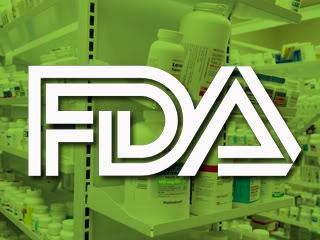Does it mean a product is safe?
 More medical devices are sold in the U.S. than other country in the world. Most Americans probably know at least one or more people among their own family or social circle who have either used or been implanted with a medical device. In order to create accountability for medical device makers, the U.S. Food and Drug Administration utilizes an approval process meant to verify the safety of products. In addition to examining studies to determine whether the claims of a device maker are accurate, the FDA also tests products, or, more often, examines the studies and testing history presented by device makers in order to help ensure those products are safe and ready for human use.
More medical devices are sold in the U.S. than other country in the world. Most Americans probably know at least one or more people among their own family or social circle who have either used or been implanted with a medical device. In order to create accountability for medical device makers, the U.S. Food and Drug Administration utilizes an approval process meant to verify the safety of products. In addition to examining studies to determine whether the claims of a device maker are accurate, the FDA also tests products, or, more often, examines the studies and testing history presented by device makers in order to help ensure those products are safe and ready for human use.
FDA approval is often a sign that a product has been rigorously reviewed and tested for safety. Consequently, most people assume an FDA-approved medical device is safe for human use. Unfortunately, not every product the FDA has approved turns out to be safe. Unfortunately, the FDA’s approval process sometimes allows unsafe products to reach retail stores’ and/or surgeons’ shelves.
How the FDA Classifies Medical Devices
The FDA classifies applications for new medical devices into three categories:
- low risk (Class 1) – devices intended to sustain or support life
- medium risk (Class 2) – devices that must be safer than Class 1 devices but don’t sustain life
- high-risk (Class 3) – devices which receive the most rigorous testing because they are intended to support life.
By way of example, these devices fall into these categories:
- Class 1: Elastic bandages, hand-held surgical instruments
- Class 2: Powered wheelchairs, catheters, blood pressure cuffs, infusion pumps
- Class 3: Heart valves, metal-on-metal hip joints, other implants
Regardless of class, certain devices can sometimes be brought to market through the FDA’s pre-market approval (PMA) or 510(k) clearance process. Two examples of medical devices cleared through the FDA’s 510(k) process include IVC Filters and Transvaginal Mesh, though several medical devices have hit the market through the agency’s 510(k) clearance process.
Pre-Market Approval: The PMA Process
The Pre-Market Approval process consists of thorough studies on a given device before it reaches the market. The PMA route, which is typically very costly, is most often used by device makers for new or very-high risk devices. While PMA is a very thorough process, it also requires lots of resources and something that can be even more valuable: Time. Time which some people needing immediate help may not have.
510(K) Clearance
The 510(k) clearance process is much easier for a proposed device maker to navigate. It requires only that the manufacturer present evidence which shows the proposed new device is substantially equivalent to device already in use on the market. This clearance process is most often used for Class 1 and Class 2 devices, which have the lowest risk of causing severe injuries.
Are FDA Testing Requirements Sufficient?
Many devices deemed by the FDA to be low or medium risk gain FDA approval without extensive testing. The considerable expense of performing thorough testing on high-risk devices, unfortunately, leads many device makers into attempts to circumvent the PMA process. While this behavior may save a device maker millions of dollars, and also make it millions of dollars in profits by getting the product more quickly on the market, it can also be detrimental to the unassuming patient and her doctor. Many devices which have made it to the market by the FDA’s 510(k) clearance process have later proved to be sufficiently troublesome to lead the recipients of those devices to require the legal help of an experienced dangerous medical device attorney.
Notable FDA Approved Device Recalls
Medical device recalls in the FDA’s recent past include:
- A Medtronic defibrillator wire that was not tested in a clinical trial
- Transvaginal mesh devices that have severely decreased the quality of life for thousands of women.
- Metal-on-metal hip implants that have leaked toxic metal ions into patients’ blood.
- IVC Blood Clot Filters which can migrate to threaten hearts or lungs while proving very difficult or even impossible to remove.
The FDA has taken steps to take some of these products from the market, but the damage, for many, has been irreversible.
FDA not Infallible
As in these cases, the FDA has proven repeatedly that it is not infallible. The agency is staffed by human beings, so it will never be infallible. But for those who have been injured by medical devices which the FDA cleared through the 510(k) process, a tort system still exists which can potentially give the injured their day in court.
RELATED
- IVC Filter Lawsuit |Attorney
- Transvaginal Mesh Lawsuit | Pelvic Mesh
- Dangerous Medical Devices not tested

by Matthews & Associates




